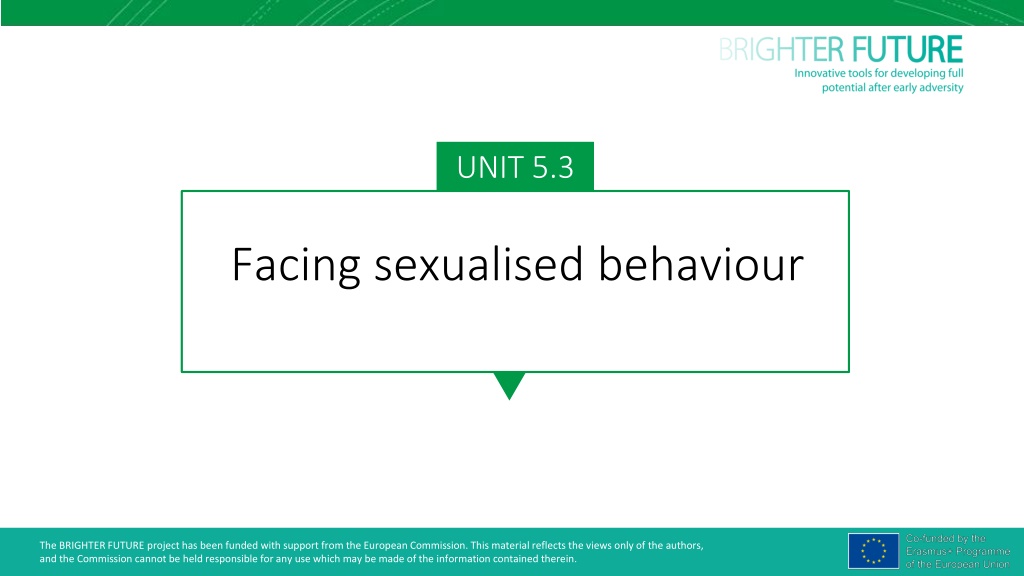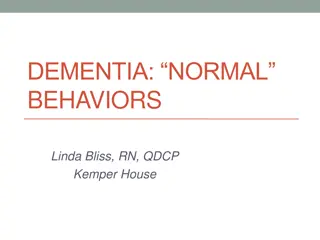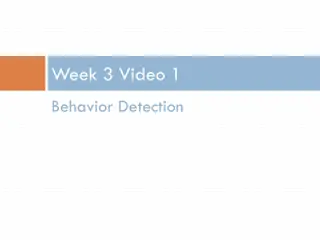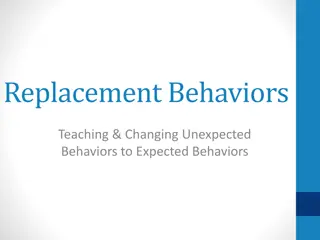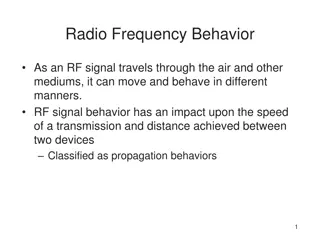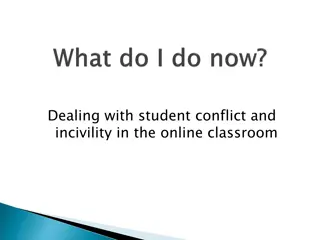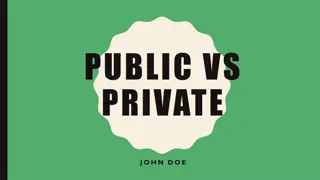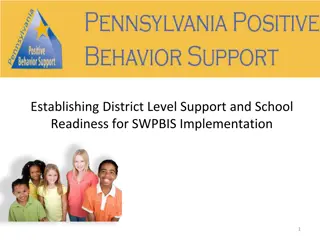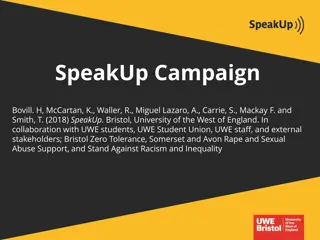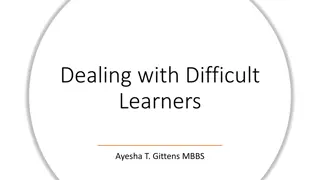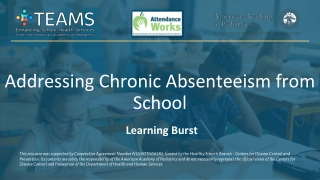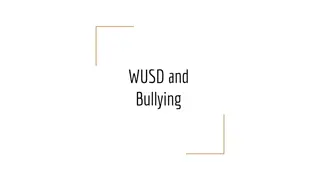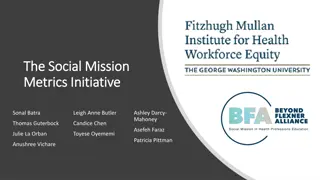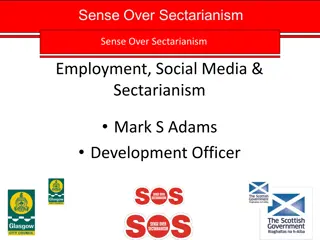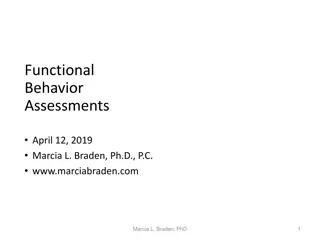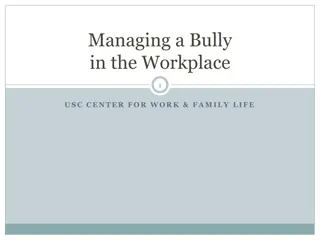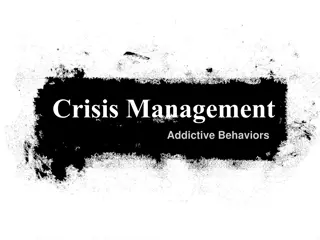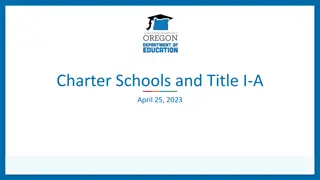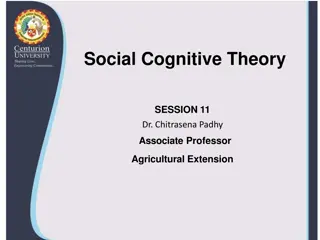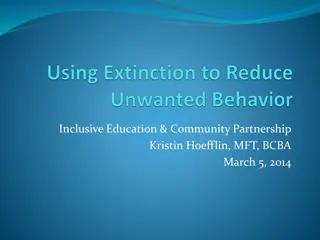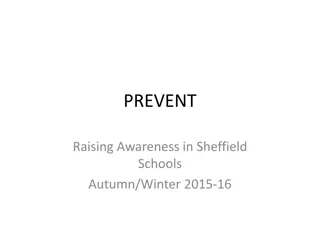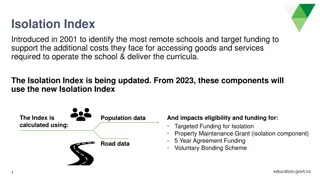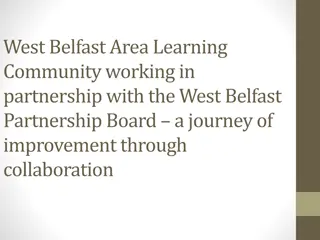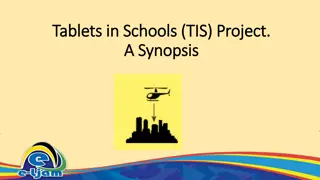Understanding and Addressing Sexualised Behaviors in Schools
This material funded by the European Commission explores the challenges of recognizing and addressing sexualised behaviors in schools, emphasizing the importance of teachers in identifying signs of distress and potential abuse among students. It discusses the central role of schools in supporting children with emotional suffering, the difficulties in detecting sexual abuse, and the various emotions teachers may experience when dealing with such sensitive situations. Key questions on managing emotions and developing necessary skills are raised to help teachers better cope with these challenges and support students effectively.
Download Presentation

Please find below an Image/Link to download the presentation.
The content on the website is provided AS IS for your information and personal use only. It may not be sold, licensed, or shared on other websites without obtaining consent from the author. Download presentation by click this link. If you encounter any issues during the download, it is possible that the publisher has removed the file from their server.
E N D
Presentation Transcript
UNIT 5.3 Facing sexualised behaviour The BRIGHTER FUTURE project has been funded with support from the European Commission. This material reflects the views only of the authors, and the Commission cannot be held responsible for any use which may be made of the information contained therein. and the Commission cannot be held responsible for any use which may be made of the information contained therein. The BRIGHTER FUTURE projecthas been funded with support from the European Commission. This material reflects the views only of the authors,
The centrality of the school Teachers can meet children with emotional suffering Children spend a lot of time at school Teachers can create trust relationships with children and recognize signals of distress Children can express distress through Inappropriete behavior in the classroom The BRIGHTER FUTURE project has been funded with support from the European Commission. This material reflects the views only of the authors, and the Commission cannot be held responsible for any use which may be made of the information contained therein.
Sexualised behaviours in the classroom Sexual abuse is the most difficult to detect because it is difficult for an adult to imagine Sexual abuse Behavior as language Children often do not talk about sexual violence but express themselves through their behaviour. The BRIGHTER FUTURE project has been funded with support from the European Commission. This material reflects the views only of the authors, and the Commission cannot be held responsible for any use which may be made of the information contained therein.
What can teachers do? A wide spectrum of teacher emotions anguish powerless anger .. The BRIGHTER FUTURE project has been funded with support from the European Commission. This material reflects the views only of the authors, and the Commission cannot be held responsible for any use which may be made of the information contained therein.
Key questions How can they successfully manage their feelings and avoid becoming harmful? What skills do teachers need to better cope with these sensitive situations? The BRIGHTER FUTURE project has been funded with support from the European Commission. This material reflects the views only of the authors, and the Commission cannot be held responsible for any use which may be made of the information contained therein.
What is important_1 to recognize to understand that what child sexual abuse is short and long-term consequences for children no child is born bad inadequate behaviour could be a result of traumatic experiences this child can be helped The BRIGHTER FUTURE project has been funded with support from the European Commission. This material reflects the views only of the authors, and the Commission cannot be held responsible for any use which may be made of the information contained therein.
What is important_2 to recognize to learn that they should not act alone they should share their observations with the school management They can activate a support network their own emotions To know how to manage them The BRIGHTER FUTURE project has been funded with support from the European Commission. This material reflects the views only of the authors, and the Commission cannot be held responsible for any use which may be made of the information contained therein.
What is child abuse_1 Child sexual abuse is the involvement of a child in sexual activities, even if not characterized by explicit violence. It can be made by an adult who is almost always an authority figure for the child, both within the family and in non-family relationships (places of aggregation, sports activities, school). The BRIGHTER FUTURE project has been funded with support from the European Commission. This material reflects the views only of the authors, and the Commission cannot be held responsible for any use which may be made of the information contained therein.
What is child abuse_2 A sexual abuse can also be perpetrated on the child through falsely playful and ambigous method, almost always by an adult who has a significant relationship with the child The affective relationship is exploited by using sexual communication totally inappropriate, harmful to children. The BRIGHTER FUTURE project has been funded with support from the European Commission. This material reflects the views only of the authors, and the Commission cannot be held responsible for any use which may be made of the information contained therein.
What is child abuse_3 A false belief: child abuse can only occur in multi-problematic households and in deprived socio-cultural contexts. Sexual abuse of children exists and is a widespread phenomenon. It is a phenomenon that cuts across all social classes, regardless of ethnicity, level of education and economic conditions. The BRIGHTER FUTURE project has been funded with support from the European Commission. This material reflects the views only of the authors, and the Commission cannot be held responsible for any use which may be made of the information contained therein.
What is child abuse_4 Any gesture of violation of intimacy certainly produces discomfort in the immediate aftermath but will also have long-term consequences well through adulthood It is always a confusing and destabilizing attack on the child s personality and developmental pathway The BRIGHTER FUTURE project has been funded with support from the European Commission. This material reflects the views only of the authors, and the Commission cannot be held responsible for any use which may be made of the information contained therein.
Behaviours as indicators of sexual abuse The child often uses behaviours instead of words to ask for help S/he identifies people close to him/her to communicate the abuse in which s/he lives The teacher is frequently the adult chosen by the abused child S/he should have the ability to pick up these signals The BRIGHTER FUTURE project has been funded with support from the European Commission. This material reflects the views only of the authors, and the Commission cannot be held responsible for any use which may be made of the information contained therein.
Behavioural indicators of sexual abuse_1 1. Early and improper sexualization age-abnormal knowledge of aspects of adult sexuality in children; tendency to eroticize relationships as a means of receiving and giving affection; compulsive search for sexualized games; drawings with sexual content; compulsive masturbation; sexual requests to adults or peers; The BRIGHTER FUTURE project has been funded with support from the European Commission. This material reflects the views only of the authors, and the Commission cannot be held responsible for any use which may be made of the information contained therein.
Behavioural indicators of sexual abuse_2 2. Emotional distress sudden crying, irritability and outbursts of anger, sudden mood swings, despair, anxiety, hyperactivity, insecurity, aggression; sleep disorders (e.g. nightmares); eating disorders; excessive and inappropriate fears; refusal to undress during sports activities; speech and learning disorders; sudden drop in performance, school phobia; self-harming behavior; ... The BRIGHTER FUTURE project has been funded with support from the European Commission. This material reflects the views only of the authors, and the Commission cannot be held responsible for any use which may be made of the information contained therein.
Consequences of early trauma Adverse events experienced in childhood can lead to serious social and cognitive fragility in children The earlier the trauma is addressed with protective interventions, the more it will be possible to guarantee a healthy adulthood They increease likelihood of developing psychopathologies in adulthood. The BRIGHTER FUTURE project has been funded with support from the European Commission. This material reflects the views only of the authors, and the Commission cannot be held responsible for any use which may be made of the information contained therein.
Sexualisation?_1 In the field of sexualization there are so-called normal behaviors playing doctor imitation and role-playing games (kissing or flirting) comparing various intimate parts occasional masturbation as an exploratory and/or consolatory act The BRIGHTER FUTURE project has been funded with support from the European Commission. This material reflects the views only of the authors, and the Commission cannot be held responsible for any use which may be made of the information contained therein.
Sexualisation?_2 Inappropriate experiences Sexual abuse viewing pornographic sites watching sex games Possible behaviors strong early sexual knowledge sexually oriented drawings sexualized behavior that creates embarrassment The BRIGHTER FUTURE project has been funded with support from the European Commission. This material reflects the views only of the authors, and the Commission cannot be held responsible for any use which may be made of the information contained therein.
Teachers emotions Sexual abuse is unthinkable: a child can t be sexually abused by an adult close to him/her The emotions involved are generally painful and unpleasant: distress, feelings of inadequacy, frustration, helplessness, failure, anger, resentment, and disgust. The BRIGHTER FUTURE project has been funded with support from the European Commission. This material reflects the views only of the authors, and the Commission cannot be held responsible for any use which may be made of the information contained therein.
Teachers emotions in cases of suspected sexual abuse_1 Emotional defense strategies DENIAL: refusal to recognize the problem even when the signs are obvious, (it s not true , I didn t notice , it s not my responsibility ). EMOTIONAL DISTANCE: indifference to what is acknowledged, e.g. it s not us who have to deal with it, it happens, I have so many other problems to think about . COLLUSION: is allying oneself with the adult instead of the child, typical of partners of abusers. The BRIGHTER FUTURE project has been funded with support from the European Commission. This material reflects the views only of the authors, and the Commission cannot be held responsible for any use which may be made of the information contained therein.
Teachers emotions in cases of suspected sexual abuse_2 Emotional defense strategies IDENTIFICATION with the VICTIM: the teacher is emotionally too close to the child, and feels powerlessness, despair, fear, and anger of such strength that he cannot perceive and act effectively. IDENTIFYING WITH THE AVENGER: The desire to do justice and protect the child leads the teacher to step out of their role, creating confusing situations both inside and outside the school. The BRIGHTER FUTURE project has been funded with support from the European Commission. This material reflects the views only of the authors, and the Commission cannot be held responsible for any use which may be made of the information contained therein.
Networking as a source of support_1 It is crucial NOT TO ACT ALONE. Emotional reactions that can arise and possible protective intervention are complex teacher can SHARE the child s situation and their own management difficulties with their school manager/superior in order to understand how to deal with the situation. If the child is already followed and known to other professionals or services in the region (psychologists, social service, etc.) teachers should share their observations with these professionals and activate a network. The BRIGHTER FUTURE project has been funded with support from the European Commission. This material reflects the views only of the authors, and the Commission cannot be held responsible for any use which may be made of the information contained therein.
Networking as a source of support_2 Networking for: teacher s own emotions management, for example with respect to anxiety or frustration. Design of intervention strategies with professionals to help the child feel better (neuropsychiatrists, psychologists, social services, educational day care centers). If the indicators are very worrisome the teacher can ask for advice in order to make a report to proper authorities. The BRIGHTER FUTURE project has been funded with support from the European Commission. This material reflects the views only of the authors, and the Commission cannot be held responsible for any use which may be made of the information contained therein.
Collaboration is necessary to build an integrated intervention solution to better assist and support children with traumatic experiences The BRIGHTER FUTURE project has been funded with support from the European Commission. This material reflects the views only of the authors, and the Commission cannot be held responsible for any use which may be made of the information contained therein.
